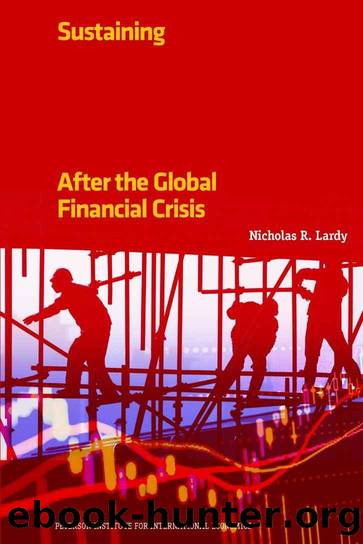Sustaining China's Economic Growth After the Global Financial Crisis by Nicholas Lardy

Author:Nicholas Lardy [Lardy, Nicholas]
Language: eng
Format: epub
Publisher: Peterson Institute for International Economics
Published: 0101-01-01T00:00:00+00:00
Figure 3.5 Real effective exchange rate and current account, June 1995âDecember 2010
Sources: Bank for International Settlements; State Administration of Foreign Exchange, www.safe.gov.cn; ISI Emerging Markets, CEIC Database.
The real effective exchange rate of the renminbi from the mid-1990s through 2001 should be regarded as an equilibrium exchange rate. Several factors underlie this judgment. First and perhaps most important, as already noted, China's average current account position in this period averaged a very modest 2 percent of GDP and showed no secular trend.57
Second, as mentioned above, prior to mid-1994 the Chinese operated a dual exchange rate system in which privileged importers could buy foreign currency at a favorable rate, and others purchased foreign exchange in what were referred to as swap centers, where exporters were the source of foreign exchange offered for sale.58 The large gap at year-end 1993, between the official rate of RMB5.8 to the dollar and the swap market rate of RMB8.7 to the dollar, reflected the substantial overvaluation of the currency at the official rate. But when the People's Bank of China unified the rates on January 1, 1994, it did so by moving the official rate to the then-prevailing swap market rate. At that point the official rate was probably a bit undervalued, but this was corrected when the authorities gradually appreciated the rate over the next 18 months to RMB8.3 to the dollar and then by October 1997 to RMB8.28 to the dollar, the point at which it was rigidly pegged until July 2005.59
The third reason for regarding the exchange rate prevailing from the mid-1990s through 2001 as an equilibrium exchange rate is that following the unification of the two exchange rates in January 1994, the central bank substantially reduced exchange controls on current account transactions. This led in late November 1996 to China's formal acceptance of the obligations imposed by Article VIII of the International Monetary Fund (IMF), meaning that China had achieved convertibility on all current account transactions and that the government would approve all bona fide requests for foreign exchange for current payments and transfers (IMF 1997, 132). Absent current account convertibility, the current account balance might be small, but this could reflect limited access to foreign exchange by would-be importers rather than a true equilibrium exchange rate.
After February 2002, however, the US dollar began to depreciate on a sustained basis. As a result of the peg to the dollar, the renminbi also depreciated in value and thus diverged systematically from its previous equilibrium rate. By the middle of 2005, when the People's Bank of China announced the change in its currency policy, the renminbi had depreciated by 15 percent in real, effective terms according to the index compiled by the Bank for International Settlements. But compared with the trend line of appreciation over the previous six or seven years, the degree of undervaluation was greater, about 20 to 25 percent (Goldstein and Lardy 2009, 10â26).
The undervaluation of the renminbi was also reflected in the gradual expansion of China's external surplus after 2002, also shown in figure 3.
Download
This site does not store any files on its server. We only index and link to content provided by other sites. Please contact the content providers to delete copyright contents if any and email us, we'll remove relevant links or contents immediately.
The Fifteen Biggest Lies about the Economy: And Everything Else the Right Doesn't Want You to Know about Taxes, Jobs, and Corporate America by Joshua Holland(1087)
The Economist (20210109) by calibre(897)
The World For Sale by Javier Blas(821)
Made in China by Anna Qu(812)
Philippines--Culture Smart! by Culture Smart!(669)
Boom and bust a global history of financial bubbles by Quinn William Turner John(656)
Mission Economy by Mariana Mazzucato(654)
Forex Trading All In One For Dummies by Mishra Mamta(640)
Big Money by Kenneth P. Vogel(624)
The Money Revolution by Anne Boden(618)
The Dictatorship of Woke Capital by Stephen R. Soukup(616)
The New Retirement Savings Time Bomb by Ed Slott(603)
Tax the Rich! by Morris Pearl(598)
Cross Winds: Adventure and Entrepreneurship in the Russian Far East by Myers Steven(592)
The Inflation Myth and the Wonderful World of Deflation by Mark Mobius(586)
Fundamentals of Finance by Mustafa Akan Arman Teksin Tevfik(563)
The Great Demographic Reversal by Charles Goodhart & Manoj Pradhan(554)
European Yearbook of International Economic Law 2017 by Marc Bungenberg Markus Krajewski Christian Tams Jörg Philipp Terhechte & Andreas R. Ziegler(552)
Business Recoded by Peter Fisk(543)
